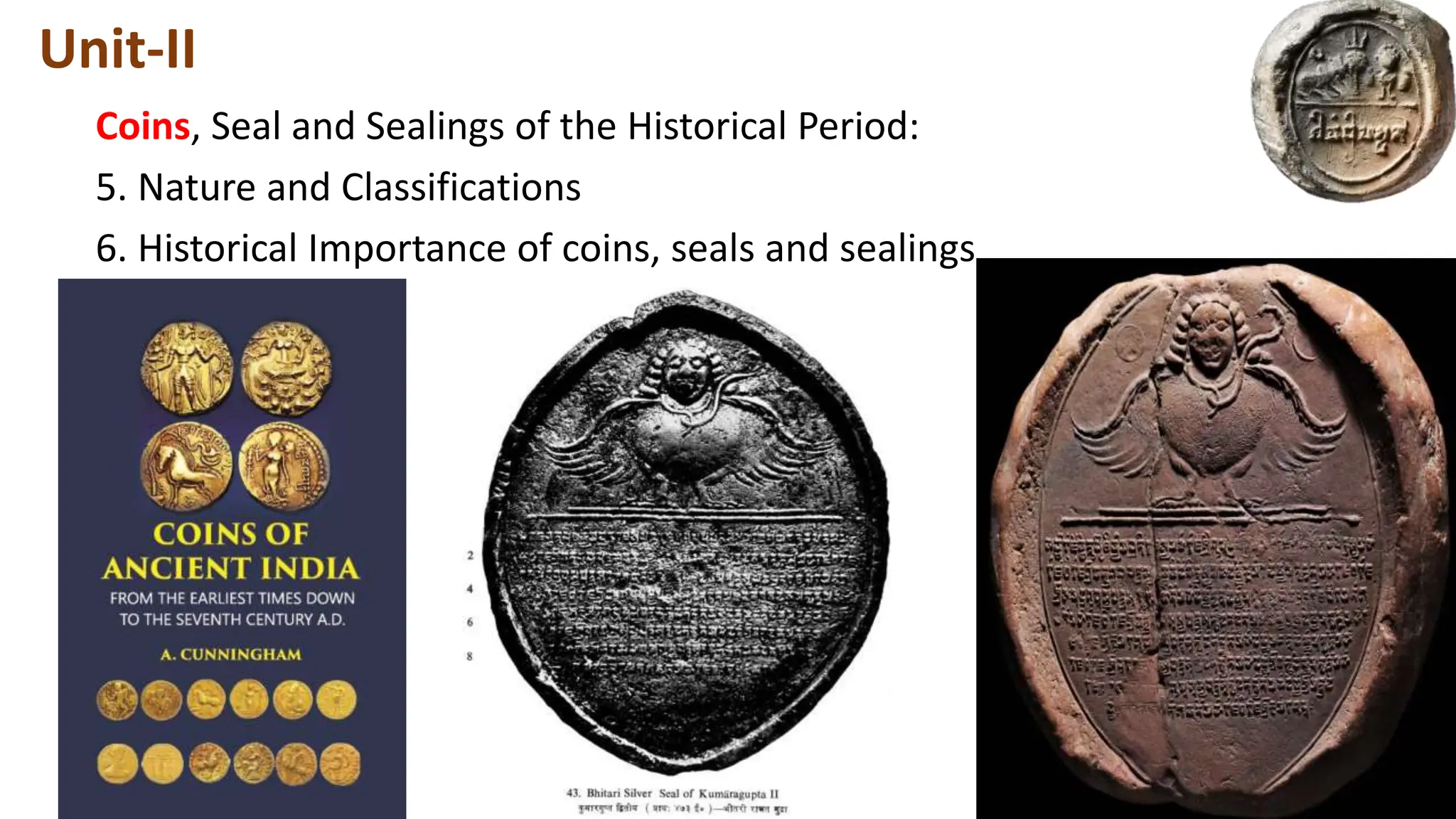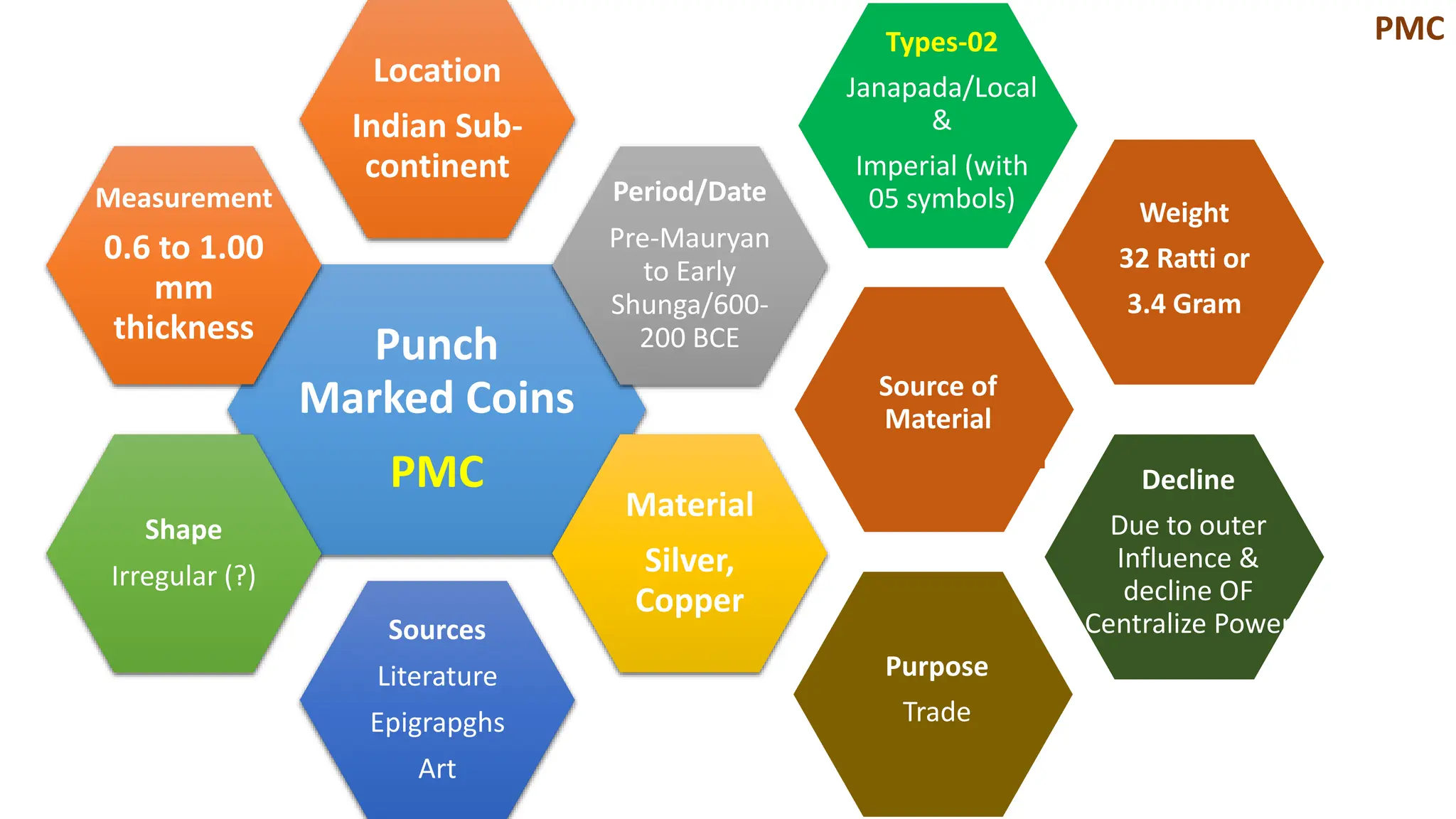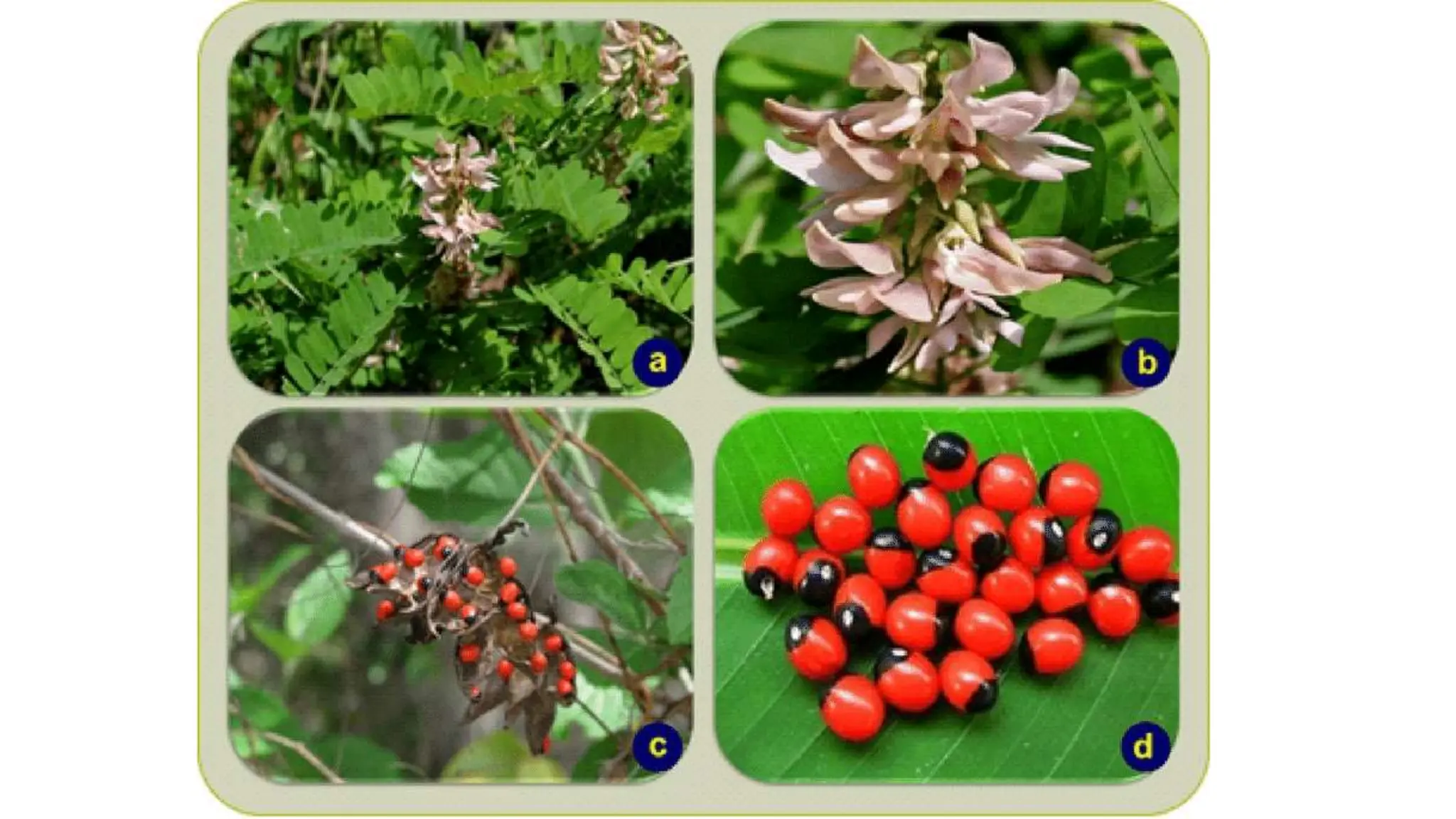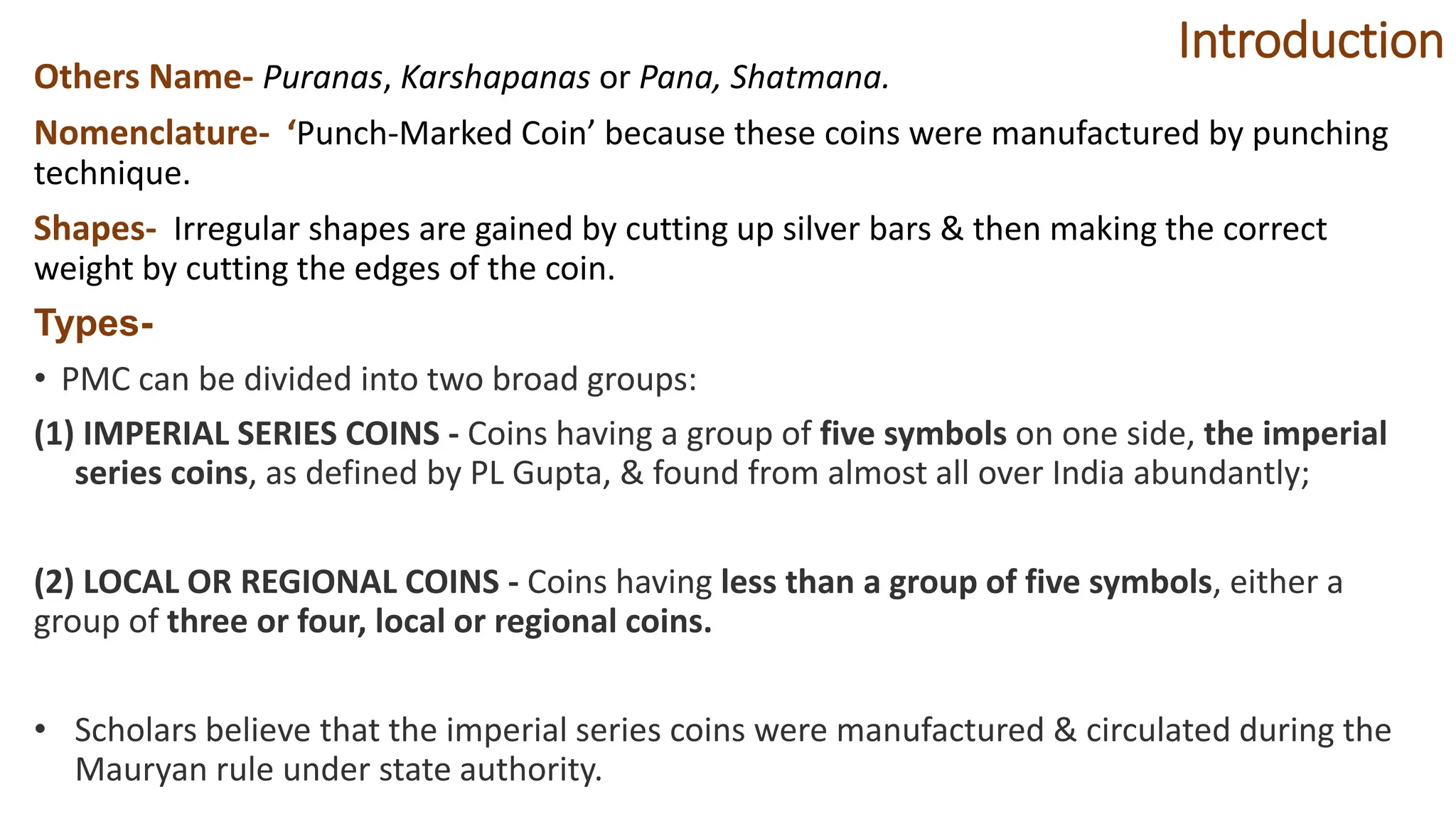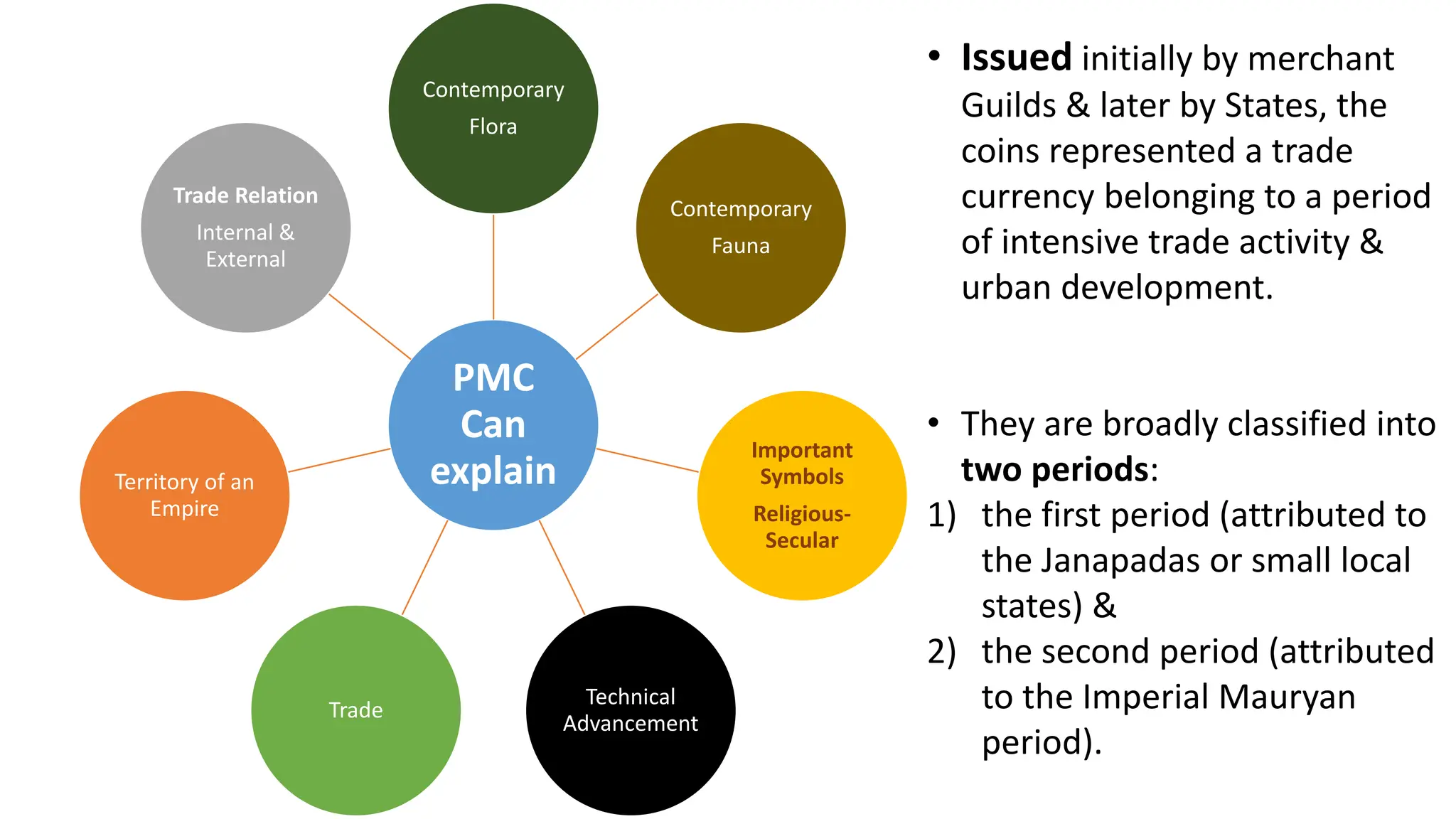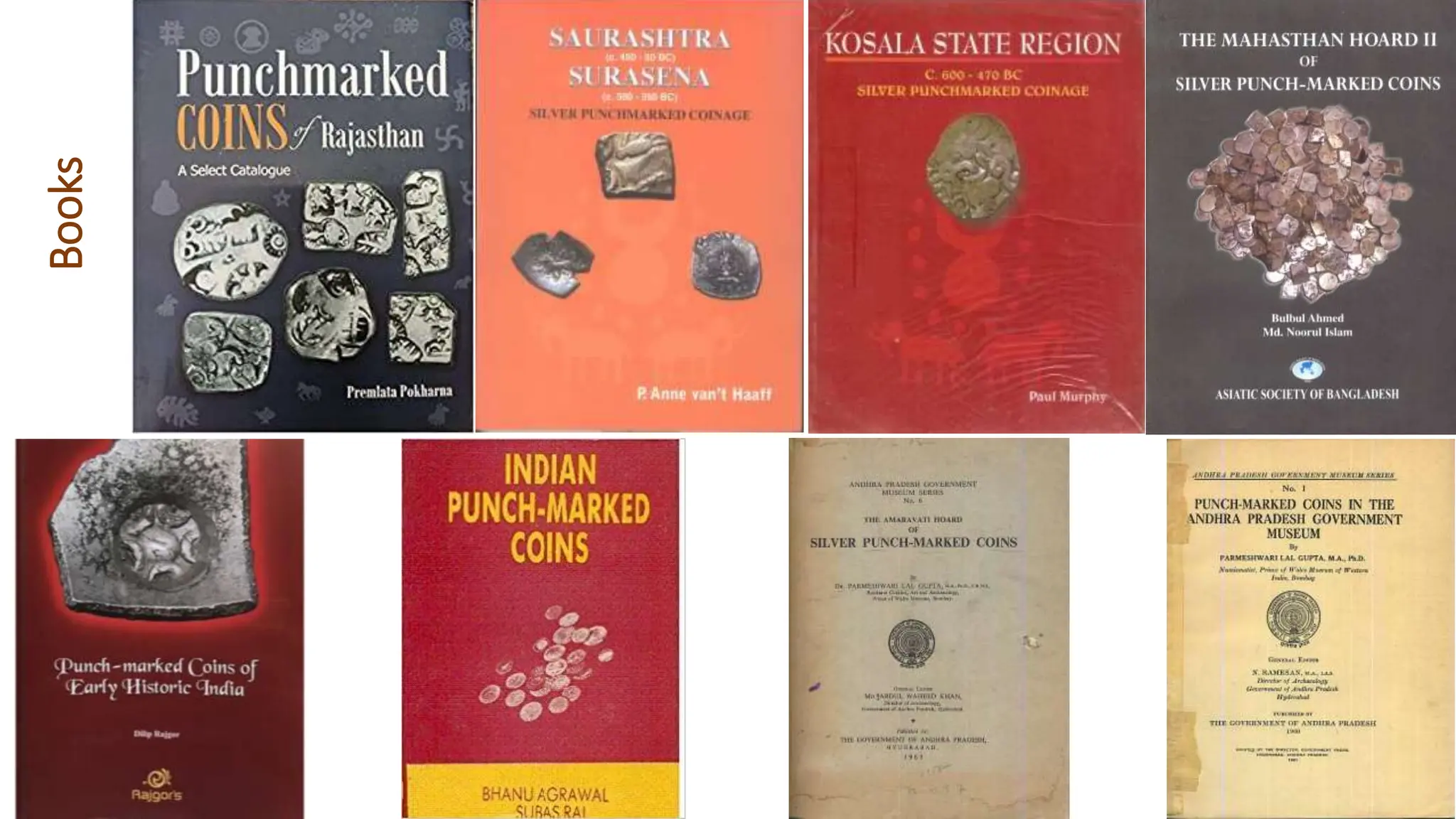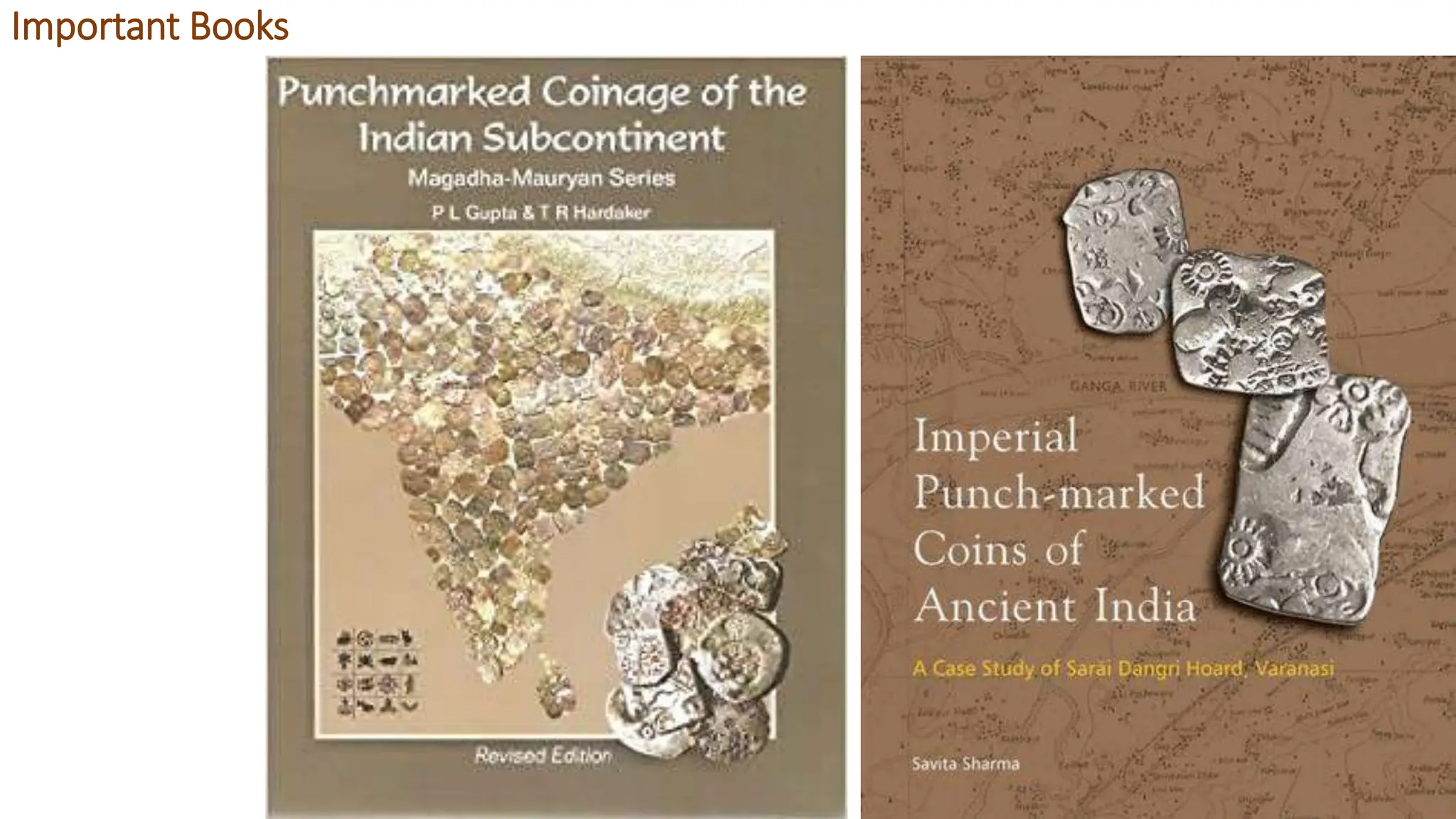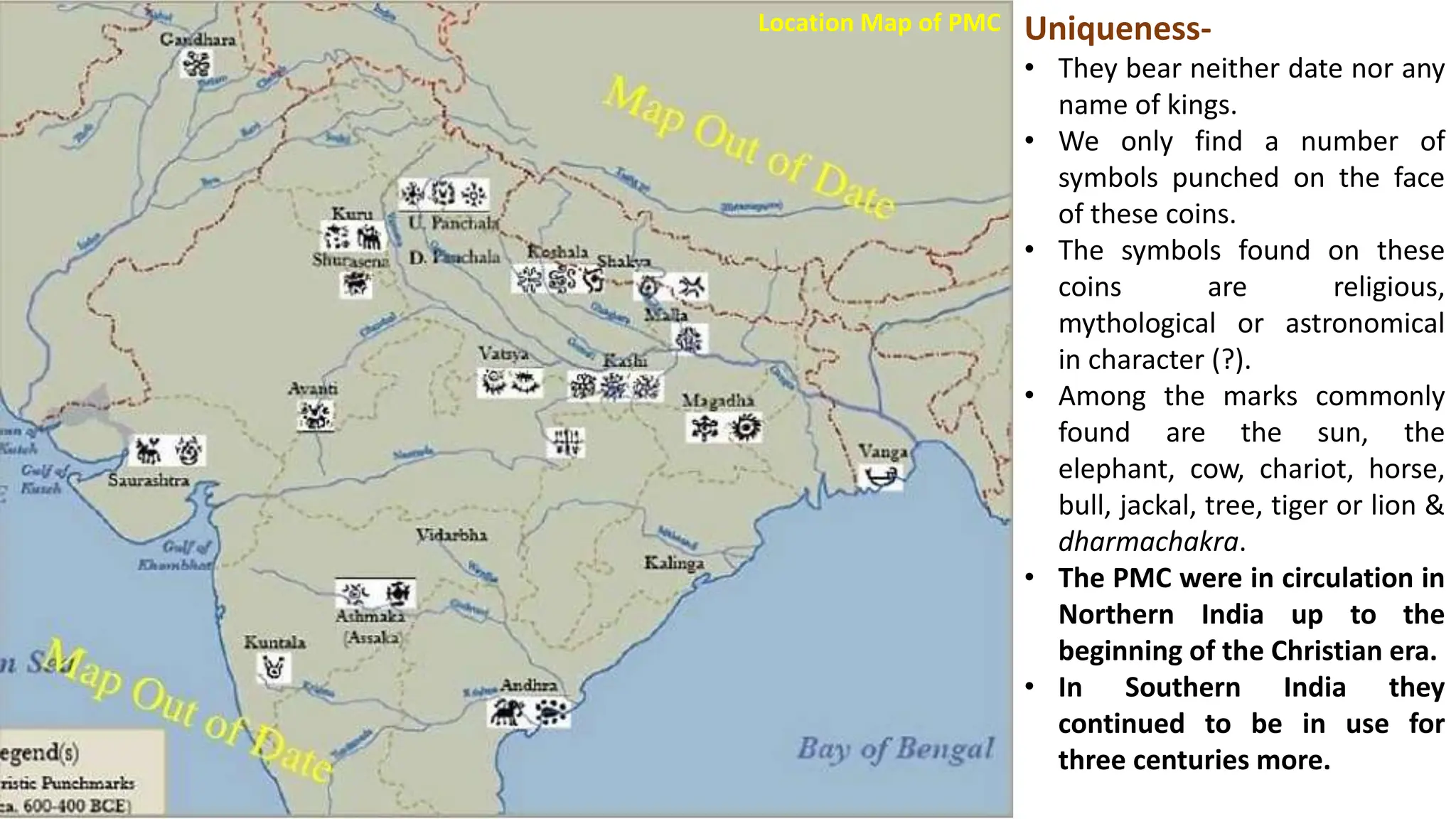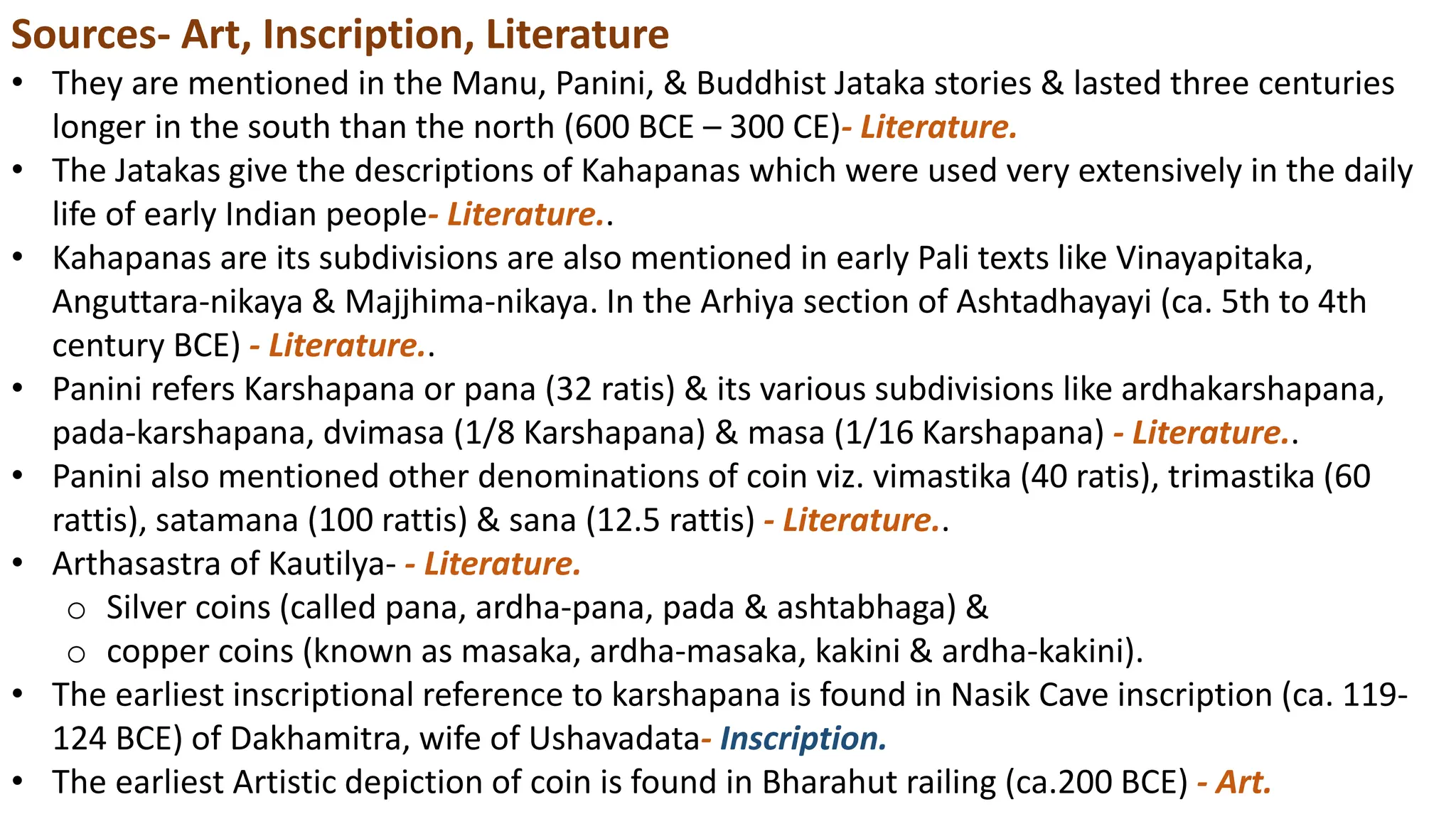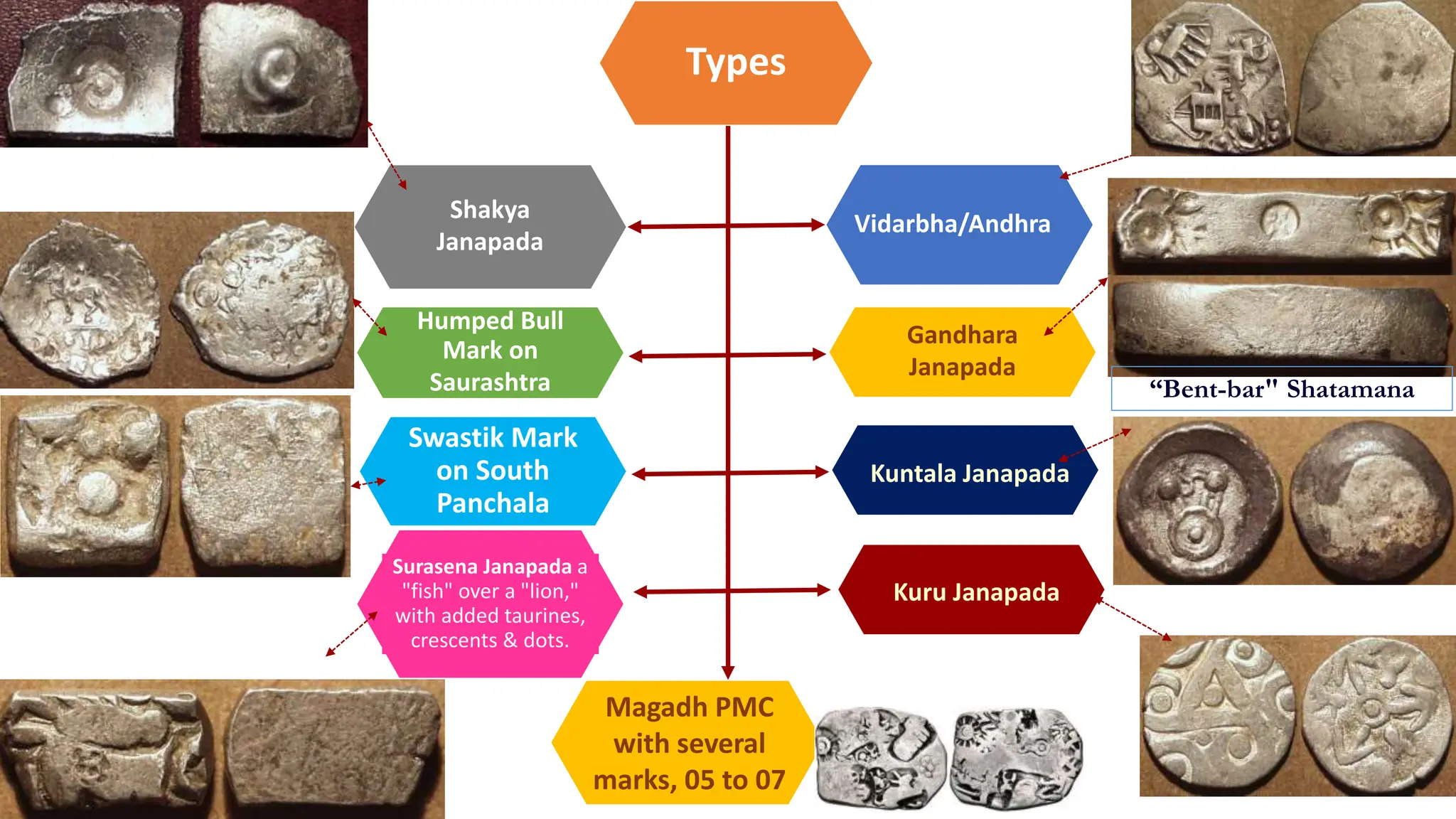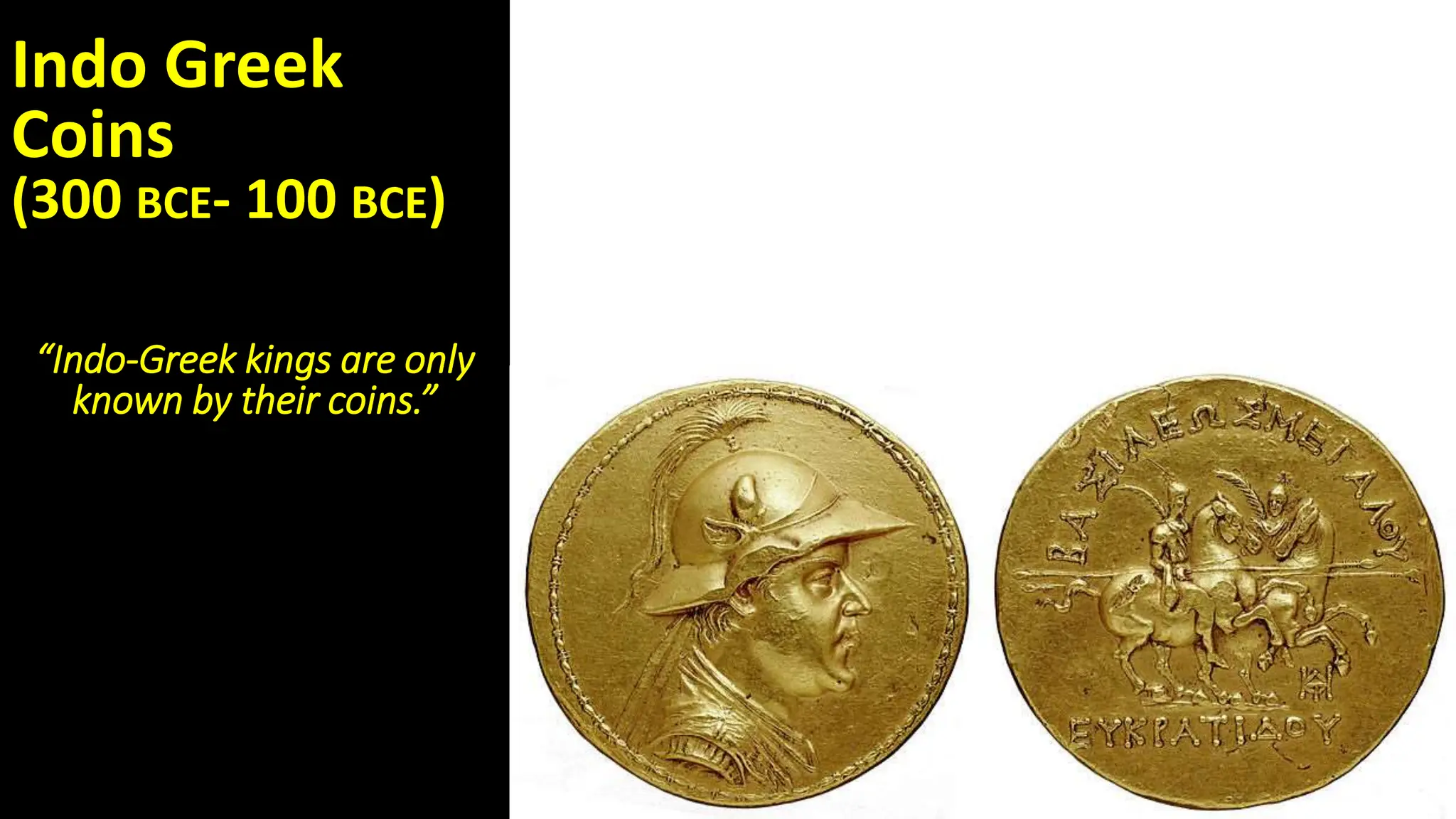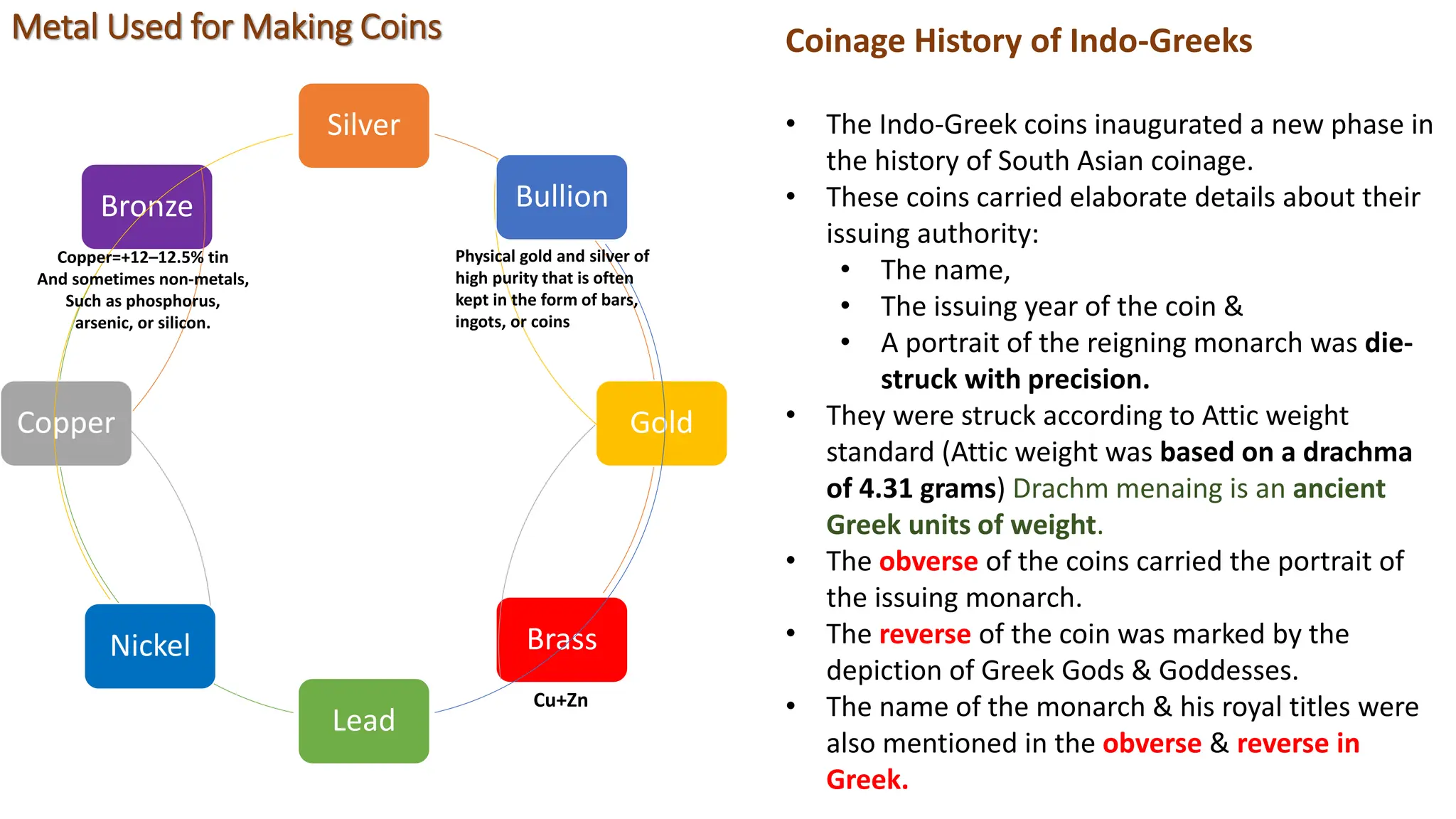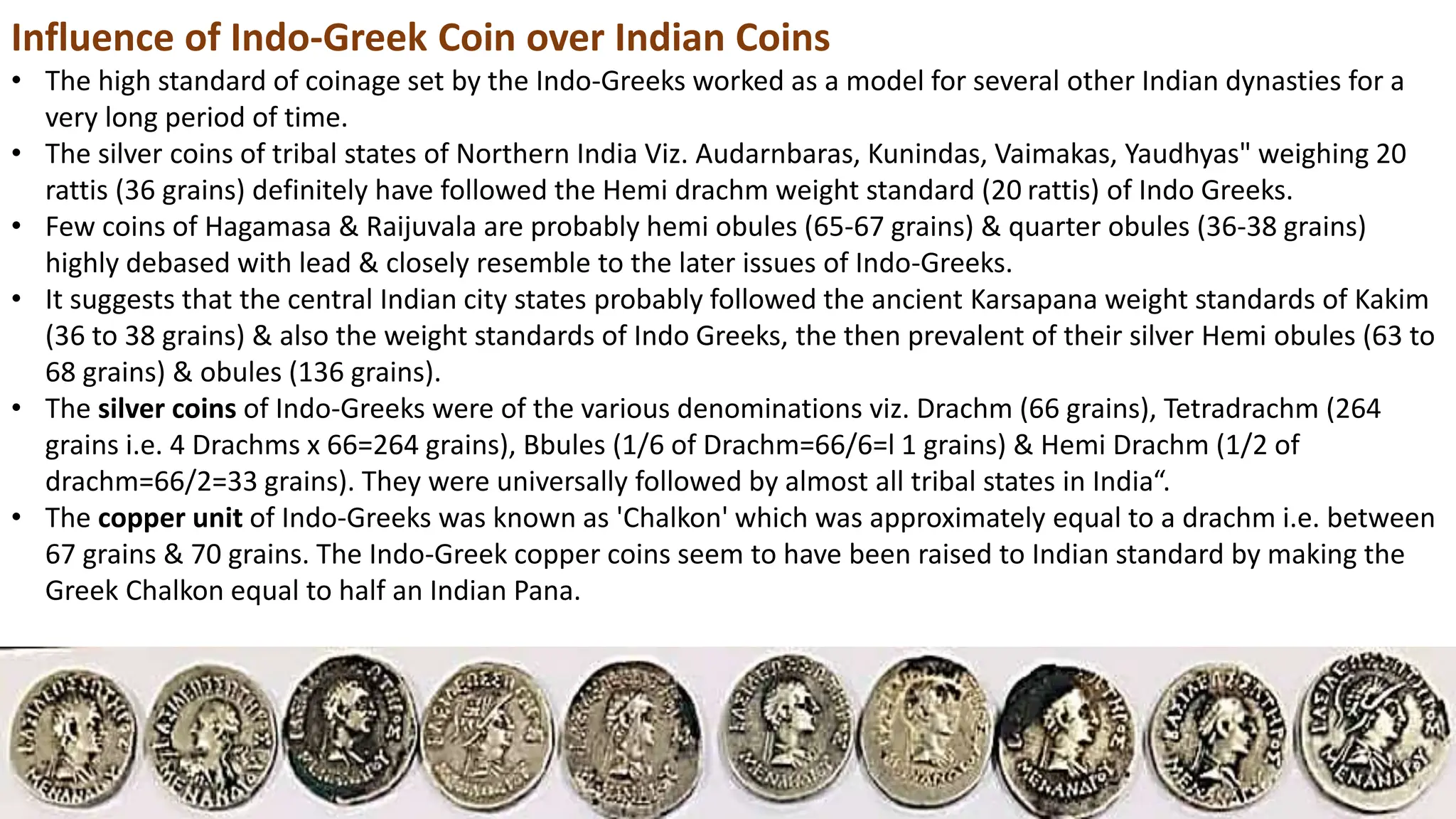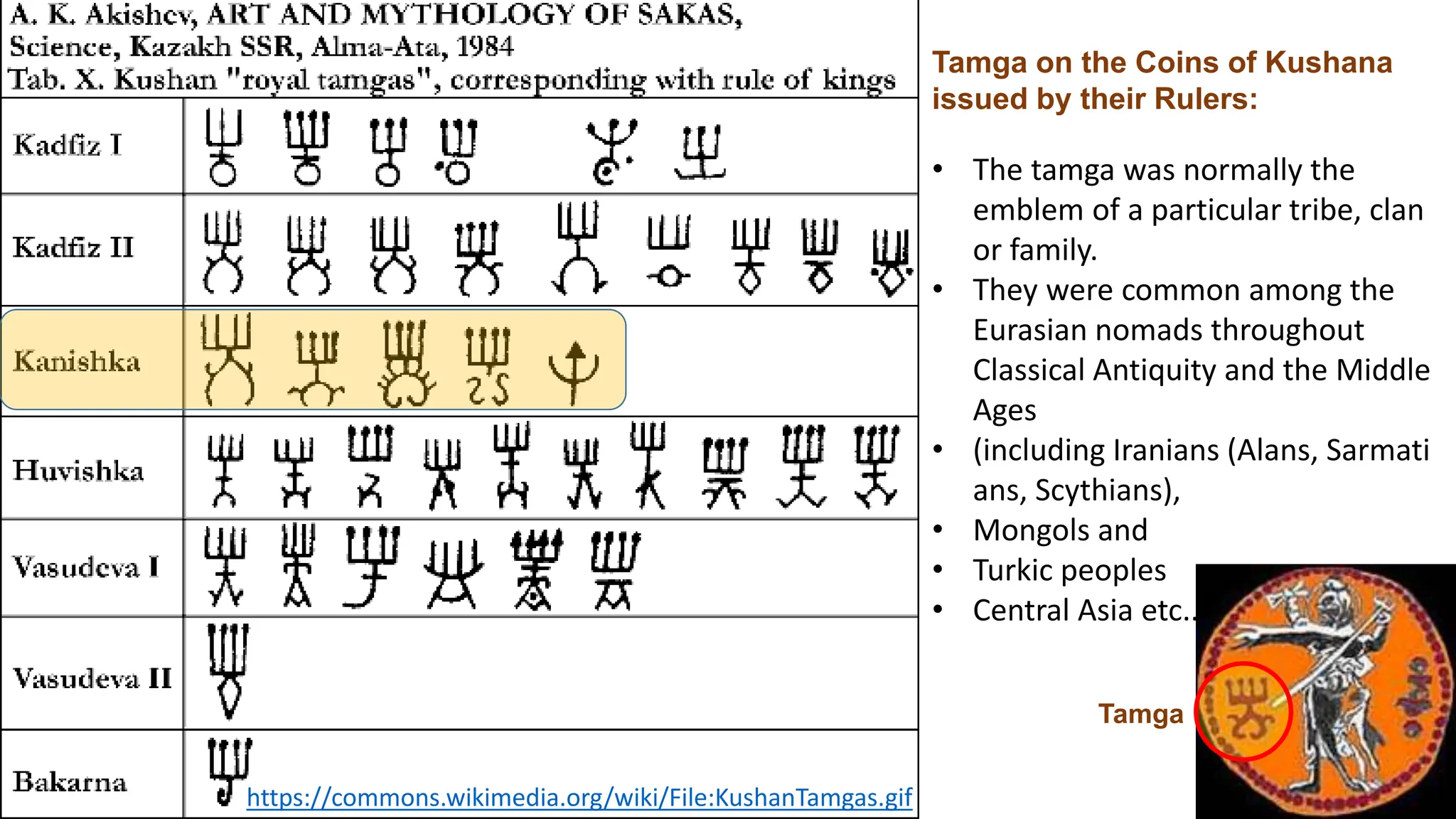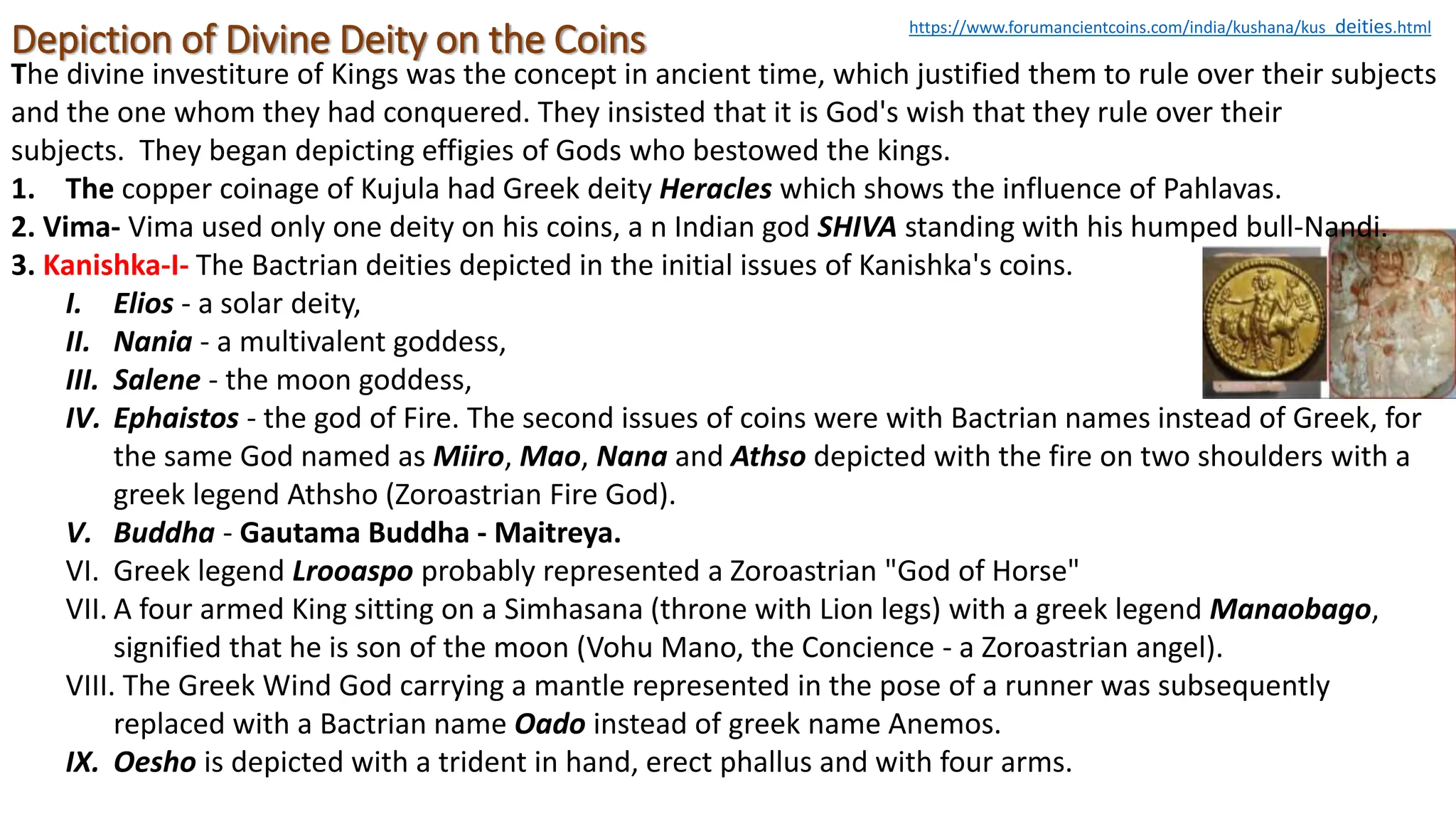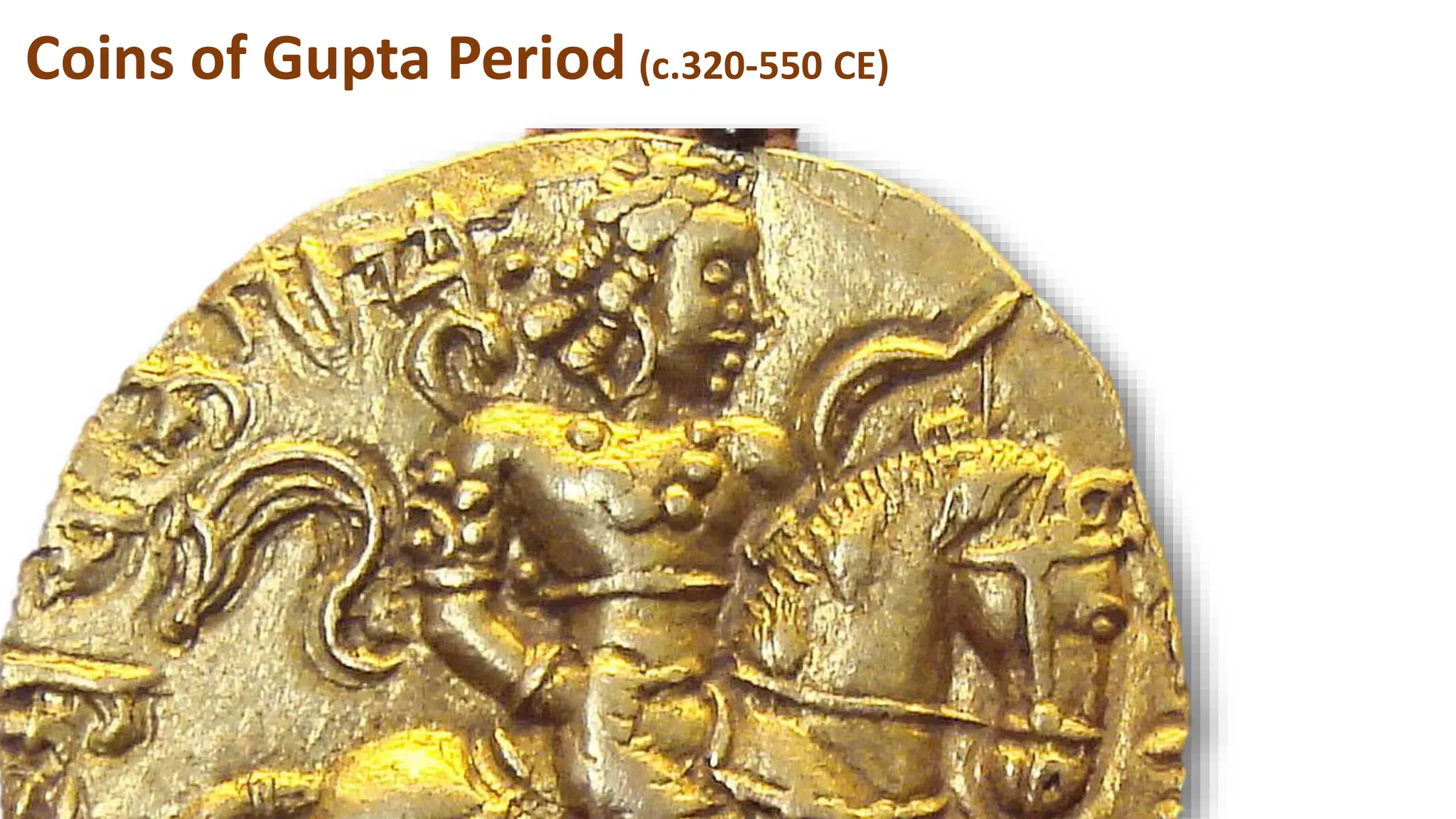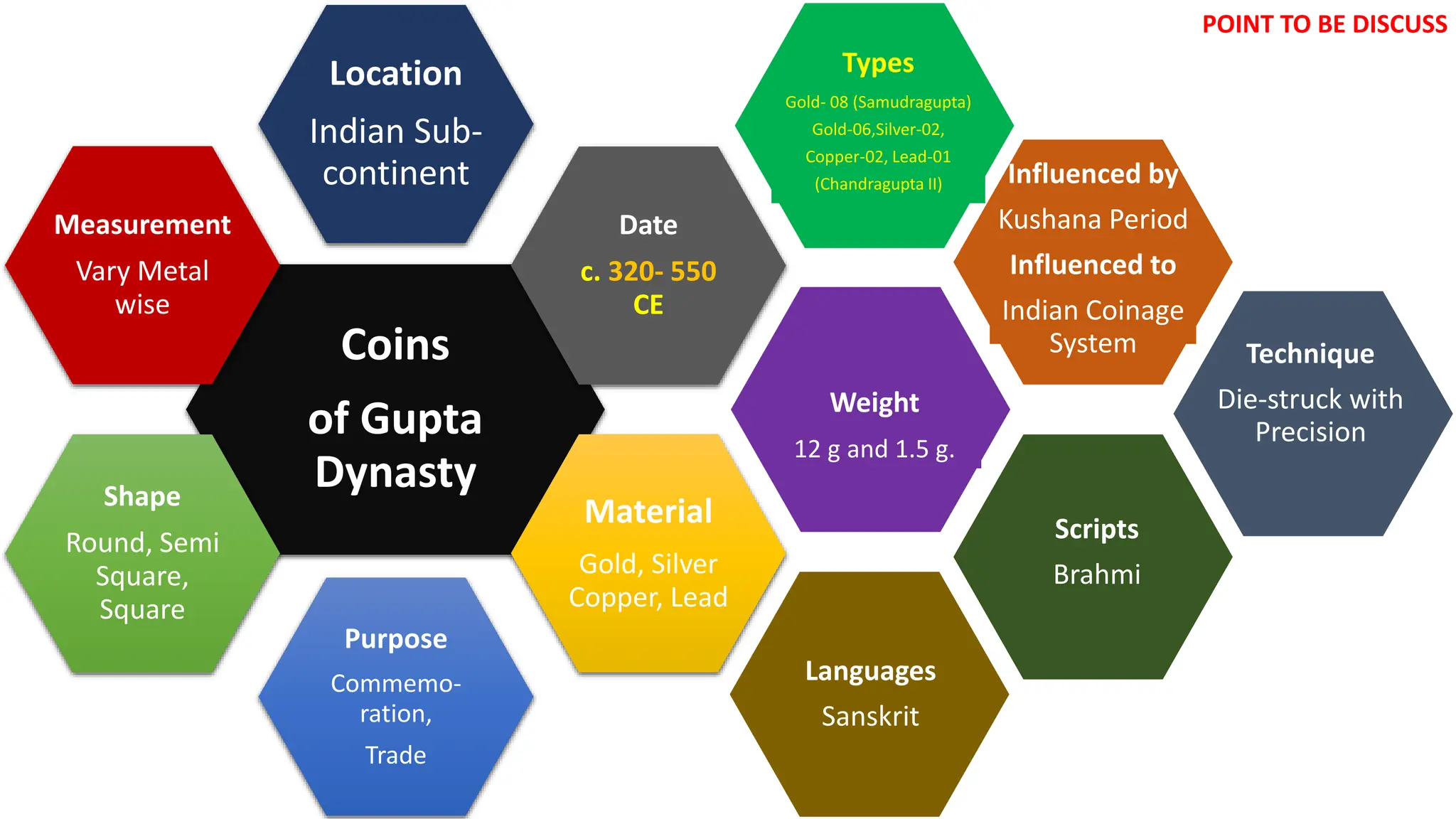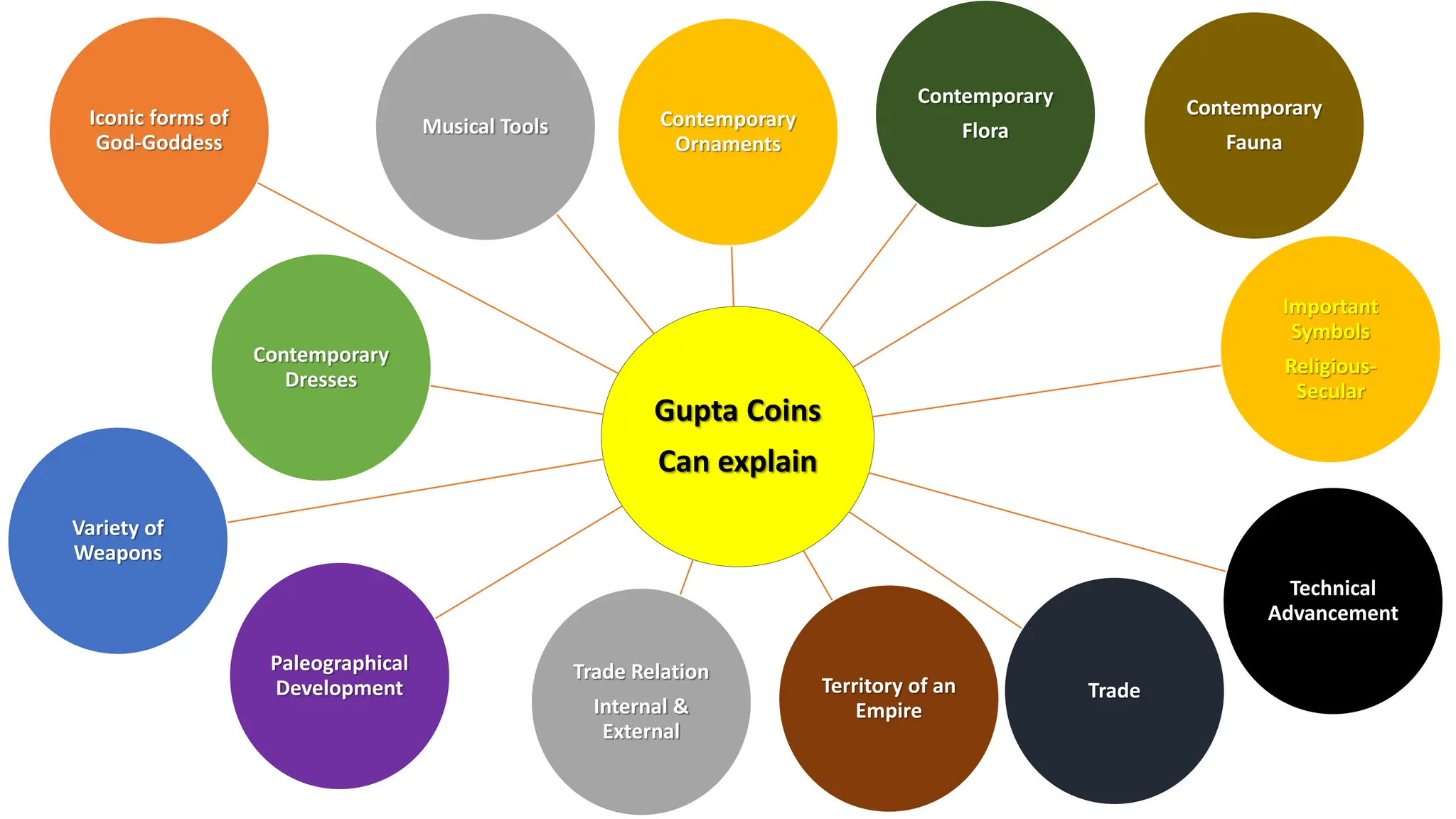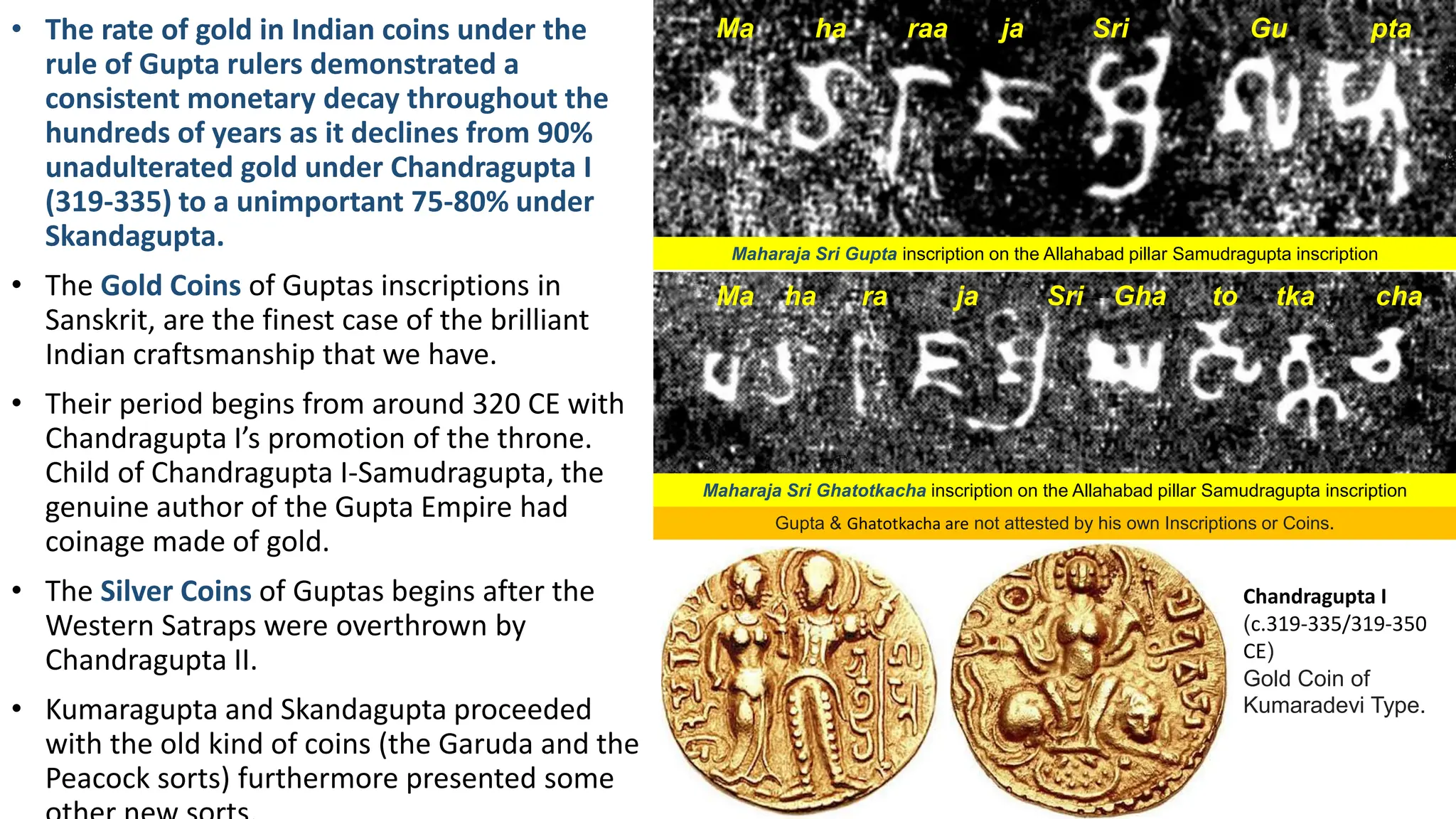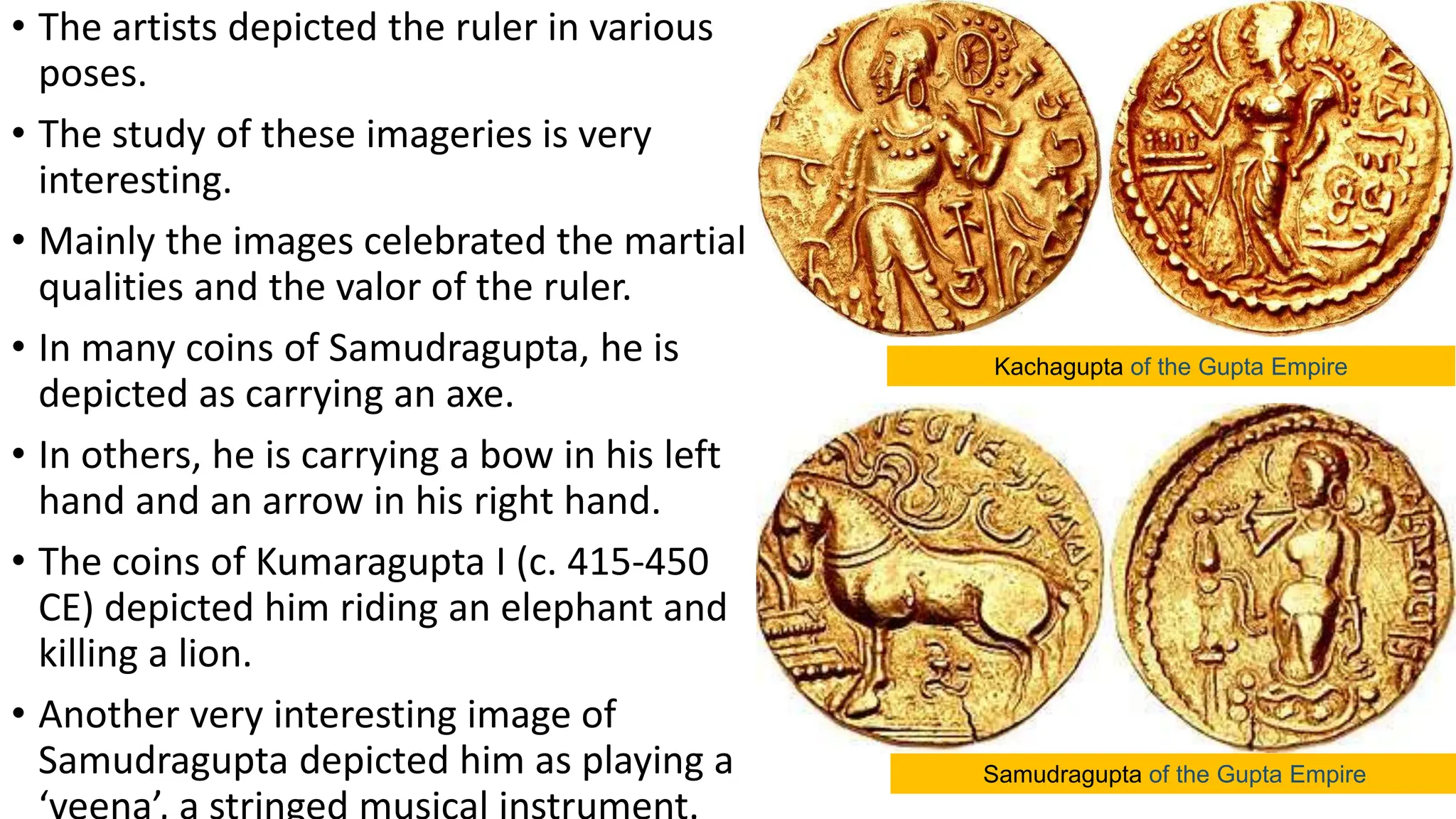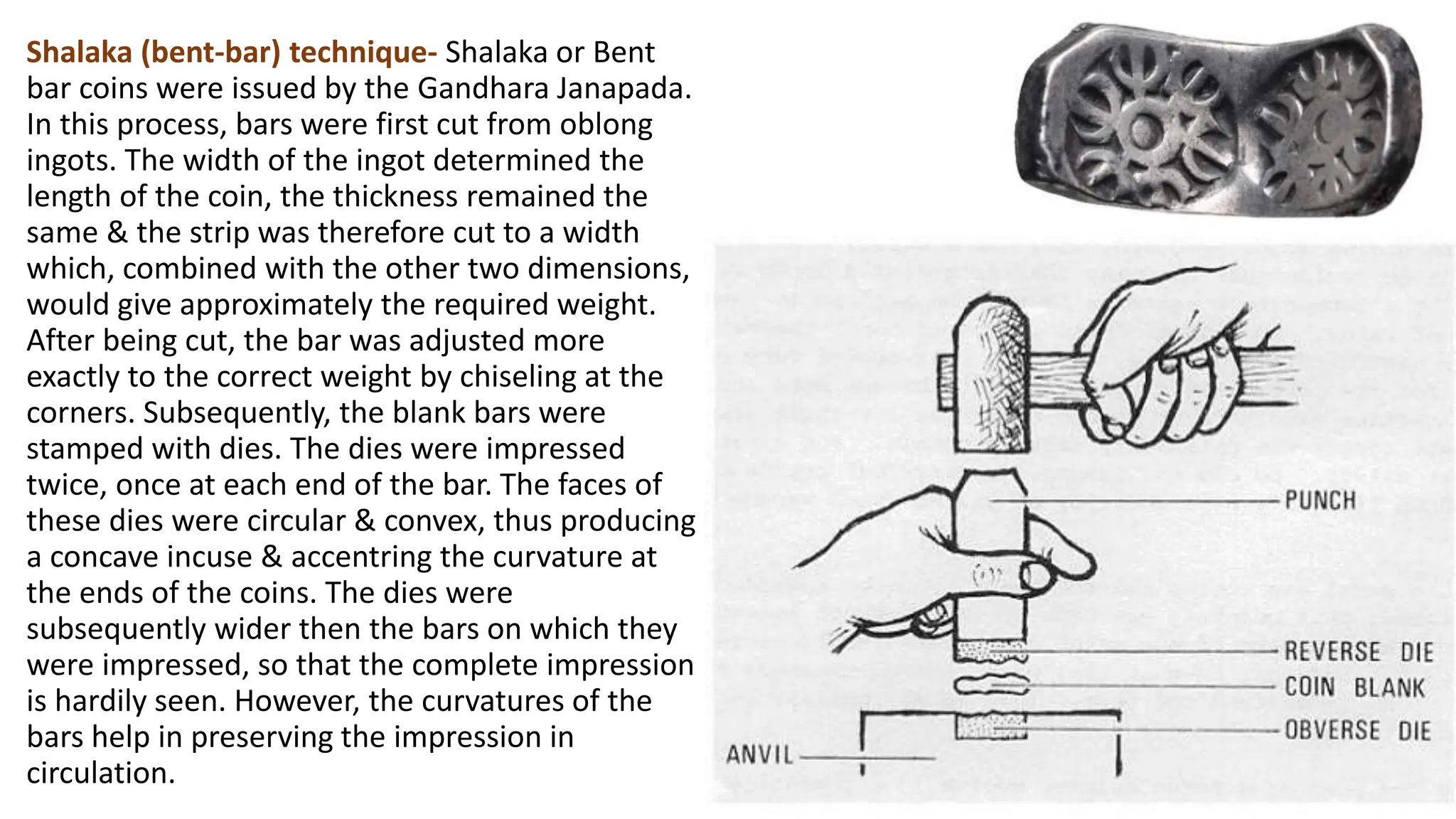Punch-marked coins and Indo-Greek coins were important forms of currency in ancient India that provide historical and cultural insights. Punch-marked coins date from 600-200 BCE and feature irregular shapes with symbols punched into the metal. They were issued by merchant guilds and states and can explain contemporary flora, fauna, trade networks, and territorial control. Indo-Greek coins date from 200 BCE to 100 CE and were precisely die-struck in precious metals. They were produced by over 40 rulers across South Asia and Afghanistan and typically included the ruler's name and portrait with Greek or Indian religious imagery. Both coin types influenced later Indian dynasties and provide evidence of economic and cultural exchange.

